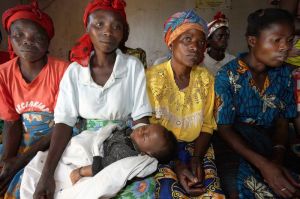Our Animas River received a serious insult recently. Fortunately the river seems to be recovering, but we cannot predict what the long-term effects will be.
Contractors working for the United States Environmental Protection Agency recently released a huge amount of toxic water and tailings from the Gold King Mine. The water spilled into the Animas River, originally named “el rio de las animas perdidas†or the “river of lost soulsâ€.
It wasn’t long before the finger pointing started. The EPA was blamed not only for the spill but also for the long delay in notifying our community. To the EPA’s credit, they are taking responsibility for the accident and for monitoring its environmental effects. There is also talk of compensating the businesses for their loss of revenue.
I am impressed that the EPA’s chief, Gina McCarthy, came to Durango to take command of the event. This is so different from the way the chief executive of BP reacted during the Deepwater Horizon disaster. While his well was polluting the Gulf of Mexico, Tony Hayward went to a sailboat race.
I know little about mining and mine remediation, but I have had plenty of home maintenance projects go awry. I can understand how the contractors working for the EPA could make the mistake that resulted in this tragedy. Fortunately the EPA is accepting responsibility, but I’ll bet that they will be careful in hiring those same contractors again!
The laws that govern hard-rock mining were written over 140 years ago, when the west was wilder and the number of people of European descent was small. Mining claims were inexpensive and easily available. The laws allowed mining with little concern for environmental protection or for remediation. This has lead to hundreds of mines such as Gold King where the value was extracted and the shaft abandoned. Water continues to flow through many of these mines, picking up silt and poisonous metals, as it has for decades. Before the deluge on August 5th up to 250 gallons of contaminated water poured out of the Gold King every minute—that’s 360,000 gallons every day! The flow has increased significantly since the dam was broken.
Folks have been concerned about pollution from the mines in Silverton for years, but insufficient remediation has been done. Being inundated by an estimated 3 million gallons of sickly orange water at one time has finally brought attention to the problem. Unfortunately, it includes international attention that puts southwest Colorado in a bad light.
This is an opportunity for those who believe that the government is too big and has too much power to be critical of the EPA. Many politicians have want to abolish it. We should be wary of their efforts to use this spill as an excuse. That doesn’t make much sense to me, however. If we didn’t have any laws that controlled mining, the Animas would run orange every day!
I think that this catastrophe (to use the word the Herald chose for its headline) will finally motivate cleanup of the Silverton mines. Even more important is to prevent future hard-rock mining problems by changing the ancient mining laws. Furthermore, this spill should motivate legislators to pass “good Samaritan†laws to protect people who work to clean up the mines from liability if things go wrong.
But maybe there is a broader lesson to be learned from the Gold King misfortune. Let me ask a couple of questions: what are we doing now that will result in Gold King-like problems in the future? Are companies charging enough to pay for cleanup that will be required in the future? I think you know what my answers will be.
Let’s look at electricity. Much of our power is generated using coal; indeed, we have two coal-fired power plants just across the border in New Mexico. Testing the mud at the bottom of Narraguinnep Reservoir north of Cortez showed low levels of mercury until about the 1970 stratum, when those plants started up. We are advised against eating fish that are caught there, a consequence of mercury from the power plants. A neurotoxin, mercury is especially bad for the most vulnerable—developing fetuses and the young. Yet the coal companies are trying to reduce the price they pay to the government for coal mined on federal land and they fight public safety regulations.
Climate change is much worse than the mercury problem since it affects all of life. Future generations may never recover from the damage we are causing with anthropogenic climate change.
           © Richard Grossman MD, 2015

